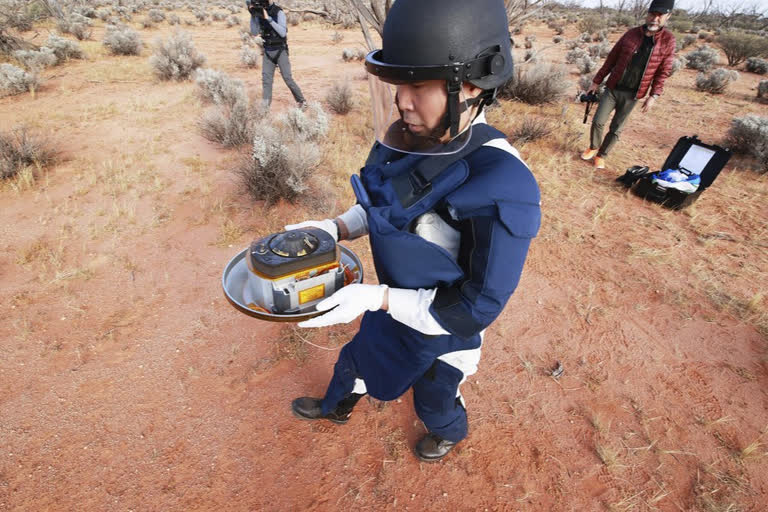Tokyo: A small capsule containing asteroid soil samples that were dropped from space by Japan’s Hayabusa2 spacecraft and landed in the Australian Outback arrived on Tuesday in Tokyo for research into the origin of the solar system and life on Earth.
At the end of its yearlong journey from asteroid Ryugu, more than 300 million kilometres (190 million miles) from Earth, Hayabusa2 released the capsule Saturday from 220,000 kilometres (136,700 miles) in space, successfully sending it to land on a targeted area in a sparsely populated desert in Woomera.
Read:| Japan awaits spacecraft return with asteroid soil samples
The extremely high precision work at the end of Hayabusa2′s six-year mission thrilled many Japanese.
The box with the capsule inside is now being transported to JAXA’s research facility in Sagamihara, near Tokyo, for analysis.
Launched in December 2014, the unmanned Hayabusa2 spacecraft touched down twice last year on the asteroid Ryugu. Despite an unexpectedly rocky surface that even forced the mission’s team to revise landing plans, the spacecraft successfully collected data and soil samples from two locations — on the surface and from underground.
Scientists say the samples, especially ones taken from under the asteroid’s surface, contain data from 4.6 billion years ago unaffected by pace radiation and other environmental factors. They are particularly interested in studying organic materials in the samples to learn about how they were distributed in the solar system and if or how they are related to life on Earth.
The samples will be treated in a cleanroom at the Sagamihara facility to avoid any external impact, and the work is expected to start soon. After initial studies and curation in Japan, some of the samples will be shared with NASA and other international scientists for further study.
AP



